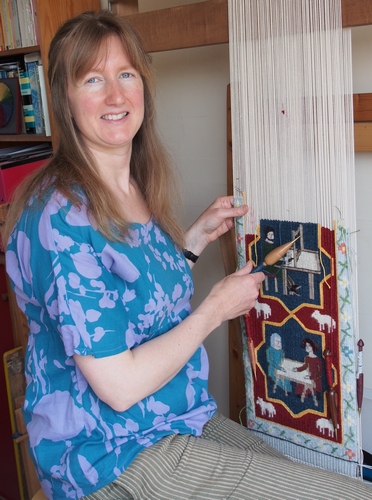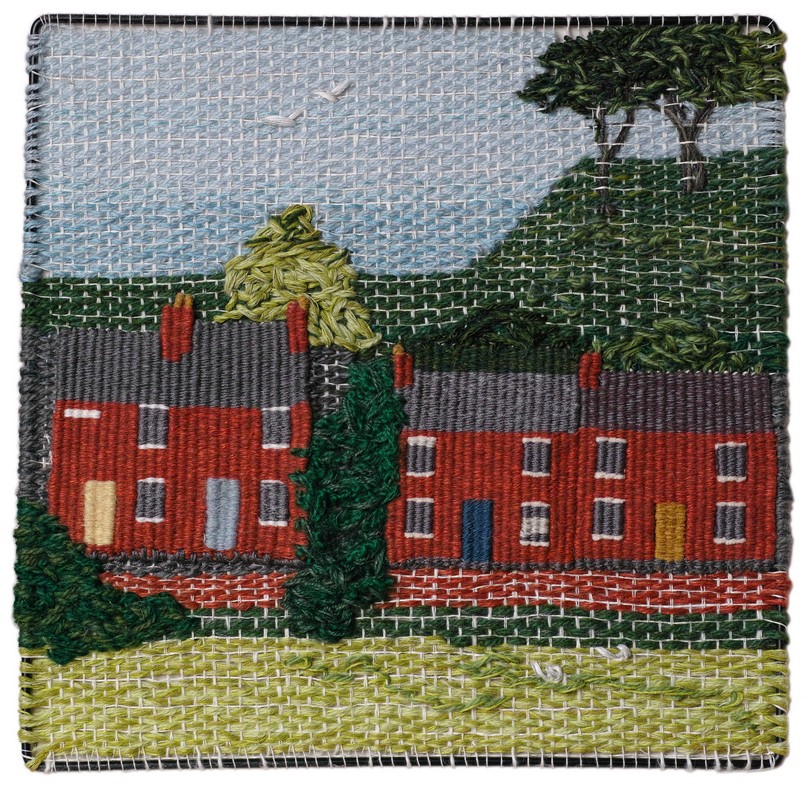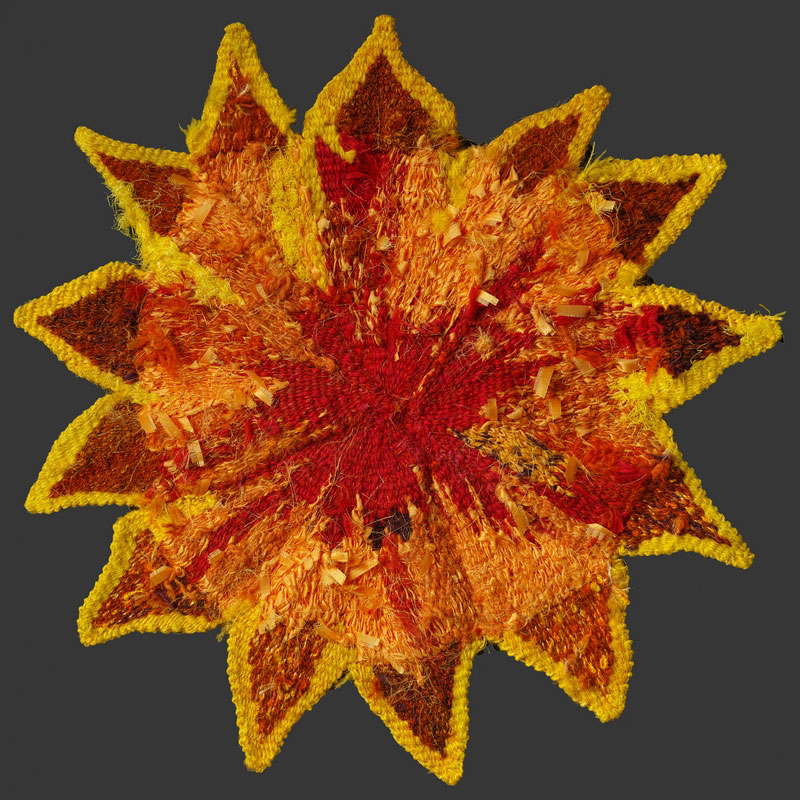
My work is driven by the urge to experiment and sample yarns. I respond to the environments I find myself in, urban or rural. Trees are a constant inspiration, as are buildings. I have recently been making work concerned with vision and the loss of sight. I favour plant fibres: cotton, hemp, linen, jute and bamboo but also include wool and silk.
I have been weaving on small frames since I was a child. Following an art and design Foundation Course, I gained a BA (Hons) in African and Asian Art and Archaeology at SOAS, London University. I have worked as an arts administrator and assistant for artists and arts organisations, gaining a certificate in Arts Management and Levels 1 & 2 OCA Textiles. Having specialised in Tapestry Weaving, I completed the post-graduate diploma at West Dean College in 1997. I exhibit in the UK and internationally.
Conversely, I am also working on and researching a medieval-inspired community embroidered tapestry to commemorate the Battle of Lewes (1264). I teach tapestry weaving and crewel embroidery techniques.


